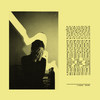Ulrika Spacek
Modern English Decoration
[Edit this Release]
- Artists:
- Ulrika Spacek »
- Label:
- Tough Love Records »
Release Date:
02/06/2017
- Artists:
- Ulrika Spacek »
- Label:
- Tough Love Records »
Staff Reviews

Ulrika Spacek - Modern English Decoration
A promising record from a still young UK band»
Buy now from:
Ulrika Spacek return with the release of their second album, Modern English Decoration. Much like their debut album released in early 2016, the band chose to record, produce and mix the entirety of the record in their shared house – a former art gallery called ‘KEN’, so named because of a cryptic inscription found above the front door. The relatively short amount of time between their first and second albums is testament to the band’s self-contained creative environment and the productivity it encourages. There’s a tendency to label this degree of self-reliant creativity ‘DIY’ - and the band do certainly feel emboldened by that ethos - yet to consider Modern English Decoration solely in these terms is a disservice. Their craft is considered and purposeful, the means of its production reflecting the band’s overall vision rather than the value system of an often haphazard and accidental DIY culture. “We enjoy listening to music through the album format and want our records to reflect that”, says Rhys Edwards (guitars, vocals, synthesiser). Ulrika Spacek formed in Berlin in one night, when 14-year-long friends Rhys Edwards and Rhys Williams conceptualised ‘Ulrika Spacek’ and came up with The Album Paranoia as their debut album title. Moving back to London with the intention to record it, they were joined by Joseph Stone (guitars, organ, synths, violin), Ben White (bass) and Callum Brown (drums, percussion), ossifying into the five-piece they are now. The album was released soon after with little forewarning and was accompanied by a year long, near-monthly club night called Oysterland. Given the lyrics often favour abstraction and the vocals can be more impressionistic than declarative, the album title itself offers perhaps the most telling entry point to the record. With three guitarists in the band guitars were always going to be central to the music, but what is less expected is the dynamic interplay between the trio that suggests a three-headed version of the Verlaine-Lloyd axis at the heart of Television. What’s more, the absence of reverb is integral, in part attributable to the ambience of the studio, but also a conscious decision in order to add focus. And focus is the abiding term: this is an album designed to be just so - a 45 minute commitment, a surrender.
description from www.roughtrade.com

